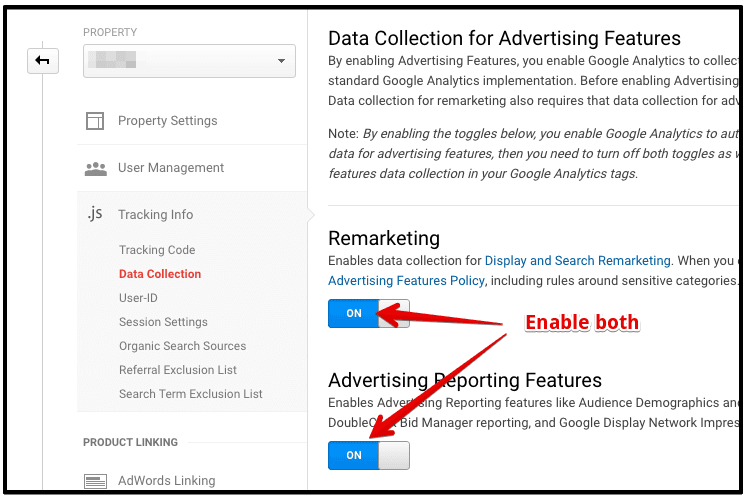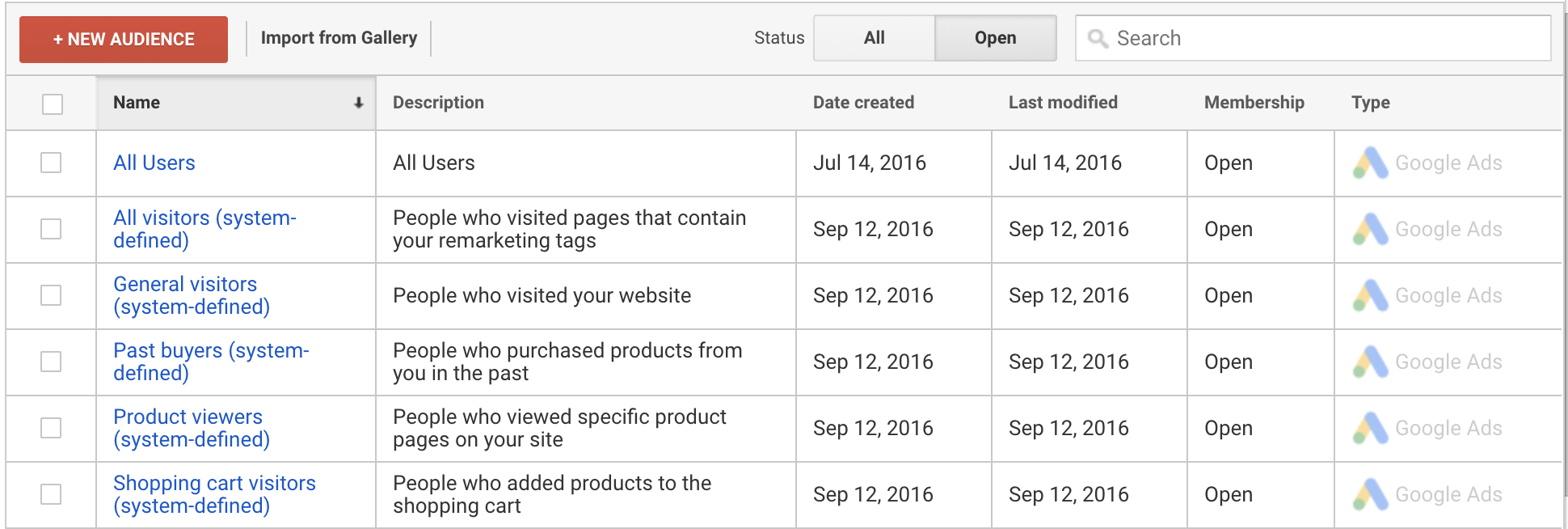Effective Techniques for Remarketing in Google Analytics
In the realm of electronic advertising and marketing, the world of remarketing in Google Analytics stands as an essential device for services aiming to boost their online existence and conversion rates. Through tactical target market division, customized remarketing checklists, and engaging ad creatives, organizations can craft individualized projects that resonate with their target market. Nonetheless, the real success hinges on the ability to constantly improve and enhance these techniques based on performance metrics and information insights. By checking out the nuances of dynamic remarketing and leveraging innovative monitoring tools, organizations can unlock the complete capacity of their remarketing initiatives, bring about increased brand exposure and client interaction.
Audience Division
Utilizing target market segmentation is an essential technique in maximizing the performance of remarketing projects within Google Analytics. By splitting your audience into distinct groups based on their actions, demographics, or passions, you can customize your advertising messages to be extra interesting and relevant. This technique allows you to provide customized ads to specific sections, enhancing the chance of conversion.

In addition, target market division helps you comprehend the varying needs and preferences of different client groups, allowing you to craft even more compelling ad creatives and offers. This targeted strategy not only enhances the performance of your remarketing initiatives yet also improves overall project efficiency.
Establishing Remarketing Checklists
To efficiently execute remarketing techniques in Google Analytics, the initial action entails producing targeted remarketing checklists based on certain audience interactions. Establishing remarketing checklists enables marketing experts to section their internet site visitors right into different classifications based on their behavior, such as pages viewed, products browsed for, or activities taken on the site. By defining these sections, online marketers can then create appropriate and customized advertisements that target these specific groups, increasing the probability of conversion.
Remarketing lists can be established using numerous criteria such as web page sees, period of see, particular objective conclusions, and even particular events caused on the website. This level of customization allows marketing experts to customize their promotions to match the interests and choices of each fractional audience, bring about higher involvement and conversion prices.
Furthermore, remarketing listings can also be produced based on information imported from various other resources like CRM systems, enabling even more accurate targeting. By establishing these targeted remarketing checklists, marketers can effectively connect to prospective consumers that have already shown rate of interest in their services or items, optimizing the effect of their remarketing campaigns.
Developing Compelling Advertisement Creatives
After segmenting internet site site visitors into targeted remarketing checklists based upon particular target market interactions, the following critical step is to craft engaging ad creatives that resonate with each segmented team's interests and preferences. The effectiveness of remarketing campaigns greatly counts on the capacity of these advertisement creatives to record the interest of the audience and drive them to take the desired activity.
To produce engaging ad creatives, it is vital to recognize the special qualities of each fractional group (What Is “Remarketing” In Google Analytics?). Customizing the messaging, visuals, and offers to straighten with the interests and choices of the target market can considerably enhance the chances of conversion. Making use of dynamic ads that automatically adjust content based on the individual's actions can also boost the customization of the ad experience

Surveillance Efficiency and Optimization
Reliable surveillance of campaign efficiency and regular optimization are important aspects of successful remarketing techniques in Google Analytics. To make sure the performance of remarketing projects, marketing professionals must on a regular basis track key performance metrics such as click-through prices, conversion rates, and return on advertisement spend. By keeping an eye on these metrics, online marketers can get important insights into the performance of their projects and recognize locations for enhancement.
In Google Analytics, marketing professionals can leverage devices like conversion monitoring and target market division to assess the efficiency of their remarketing projects. Conversion monitoring enables marketing linked here experts to track particular actions that users take after clicking on a remarketing advertisement, giving valuable information on the efficiency of the project in driving preferred results. Audience segmentation, on the other hand, enables marketers to divide their audience into different sectors based on different requirements such as demographics, actions, and passions, enabling even more targeted and customized remarketing efforts.
Continuous optimization is important for making the most of the effect of remarketing projects. Marketing professionals need to make use of A/B screening to try out different ad creatives, messaging, and targeting strategies to identify the most efficient strategies. By consistently analyzing campaign performance information and making data-driven optimizations, marketers can guarantee that their remarketing projects are accomplishing the desired results and driving conversions properly.
Leveraging Dynamic Remarketing
Making use of vibrant remarketing can substantially enhance the importance and next effect of targeted ads in Google Analytics. This innovative technique enables advertisers to reveal customized advertisements to customers that have actually formerly seen their internet site or used their mobile application. By dynamically displaying service or products that the individuals have revealed passion in, dynamic remarketing helps to maintain the brand fresh in their minds and motivates them to return to complete an acquisition.

Additionally, dynamic remarketing campaigns can be automated and optimized in real-time based upon performance data, ensuring that the advertisements stay relevant and reliable. By leveraging dynamic remarketing in Google Analytics, advertisers can create much more impactful and targeted marketing campaign that reverberate with their target market and drive results.
Final Thought
To conclude, reliable remarketing strategies in Google image source Analytics include target market segmentation, targeted remarketing lists, engaging ad creatives, performance monitoring, and dynamic remarketing. By concentrating on customized ads, data evaluation, and continual optimization, companies can increase conversion prices and drive engagement efficiently. Leveraging devices like conversion monitoring makes certain that ads continue to be appropriate and tailored, leading to general success in remarketing efforts.
With calculated audience division, customized remarketing lists, and interesting ad creatives, businesses can craft personalized projects that reverberate with their target audience. Making use of dynamic ads that instantly readjust material based on the customer's behavior can additionally boost the personalization of the ad experience.
Conversion monitoring permits marketers to track details actions that users take after clicking on a remarketing advertisement, giving important data on the efficiency of the campaign in driving desired outcomes.Using dynamic remarketing can substantially boost the significance and impact of targeted ads in Google Analytics - What Is “Remarketing” In Google Analytics?.In conclusion, effective remarketing techniques in Google Analytics include target market segmentation, targeted remarketing lists, compelling advertisement creatives, performance tracking, and vibrant remarketing
Comments on “Maximizing Your ROI with Remarketing In Google Analytics”